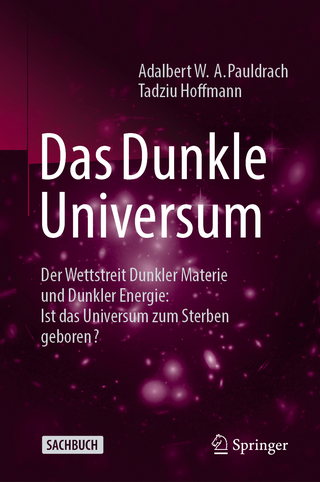
An Introduction to General Relativity and Cosmology
Cambridge University Press (Verlag)
978-1-009-41562-0 (ISBN)
Experts Plebański and Krasiński provide a thorough introduction to the tools of general relativity and relativistic cosmology. Assuming familiarity with advanced calculus, classical mechanics, electrodynamics and special relativity, the text begins with a short course on differential geometry, taking a unique top-down approach. Starting with general manifolds on which only tensors are defined, the covariant derivative and affine connection are introduced before moving on to geodesics and curvature. Only then is the metric tensor and the (pseudo)-Riemannian geometry introduced, specialising the general results to this case. The main text describes relativity as a physical theory, with applications to astrophysics and cosmology. It takes the reader beyond traditional courses on relativity through in-depth descriptions of inhomogeneous cosmological models and the Kerr metric. Emphasis is given to complete and clear derivations of the results, enabling readers to access research articles published in relativity journals.
Jerzy Plebański (1928–2005) was a Polish theoretical physicist best known for his extensive research into general relativity, nonlinear electrodynamics and mathematical physics. He split his time between Warsaw, Poland, and Mexico, his permanent residence from the mid-1970s onwards. He is remembered, among other things, for defining the algebraic classification of the tensor of matter, for finding new solutions of the Einstein equations (for example, the Plebański–Demiański metric), formulation of the heavenly equations and the effective field theory relating GR and supergravity, known as Plebański action. The first part of the book is developed from Plebański's lecture notes. Andrzej Krasiński is Emeritus Professor at the Nicolaus Copernicus Astronomical Center, Polish Academy of Sciences in Warsaw. He served for many years on the Editorial Board of the journal 'General Relativity and Gravitation' and has acted as Poland's elected representative on the international committee of the International Society for General Relativity and Gravitation. He is author of Inhomogeneous Cosmological Models (Cambridge, 1997), co-author of Structures in the Universe by Exact Methods (Cambridge, 2009), and co-editor of Golden Oldies in General Relativity (Springer, 2013). His research record includes many papers on the interpretation of inhomogeneous cosmological models. He is also a co-author of a computer program, Ortocartan, for algebraic calculations in general relativity.
The scope of this text; Preface to the second edition; Acknowledgements; 1. How the theory of relativity came into being (a brief historical sketch); Part I. Elements of Differential Geometry: 2. A short sketch of 2-dimensional differential geometry; 3. Tensors, tensor densities; 4. Covariant derivatives; 5. Parallel transport and geodesic lines; 6. The curvature of a manifold; flat manifolds; 7. Riemannian geometry; 8. Symmetries of Riemann spaces, invariance of tensors; 9. Methods to calculate the curvature quickly: differential forms and algebraic computer programs; 10. The spatially homogeneous Bianchi-type spacetimes; 11. The Petrov classification by the spinor method; Part II. The Theory of Gravitation: 12. The Einstein equations and the sources of a gravitational field; 13. The Maxwell and Einstein–Maxwell equations and the Kaluza–Klein theory; 14. Spherically symmetric gravitational fields of isolated objects; 15. Relativistic hydrodynamics and thermodynamics; 16. Relativistic cosmology I: general geometry; 17. Relativistic cosmology II: the Robertson–Walker geometry; 18. Relativistic cosmology III: the Lemaître–Tolman geometry; 19. Relativistic cosmology IV: Simple generalisations of L–T and related geometries; 20. Relativistic cosmology V: the Szekeres geometries; 21. The Kerr metric; 22 Relativity enters technology: the Global Positioning System; 23. Subjects omitted from this book; 24. Comments to selected exercises and calculations; References; Index.
| Erscheinungsdatum | 25.05.2024 |
|---|---|
| Zusatzinfo | Worked examples or Exercises |
| Verlagsort | Cambridge |
| Sprache | englisch |
| Maße | 170 x 244 mm |
| Gewicht | 1233 g |
| Themenwelt | Naturwissenschaften ► Physik / Astronomie ► Astronomie / Astrophysik |
| Naturwissenschaften ► Physik / Astronomie ► Relativitätstheorie | |
| ISBN-10 | 1-009-41562-X / 100941562X |
| ISBN-13 | 978-1-009-41562-0 / 9781009415620 |
| Zustand | Neuware |
| Haben Sie eine Frage zum Produkt? |
aus dem Bereich


